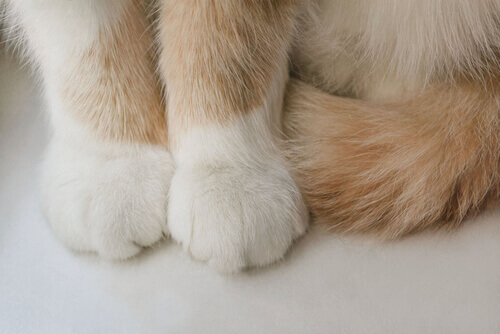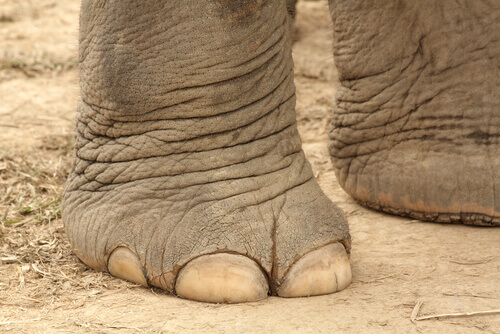5 Digitigrade and Plantigrade Animals

Digitigrade animals are those that walk using only the toes of their feet (or paws); they’re usually much quieter and faster than other species. We’ll tell you about some of them in this article.
What are digitigrade animals?
Unlike ungulates, which walk on their toes but have hooves, only the nails (or claws) and digital pads of digitigrade animals make contact with the ground; they have a unique support structure. Here are some examples:
1. Dogs
This domesticated species, whose closest ancestor is the wolf–also digitigrade–walks on its four toes or digital pads, which it has on both its hind and front legs. Dogs also have a metacarpal pad in the center of their foot, an unsupported inner toe, and an upper carpal pad.
Dogs’ paws can be bald or covered with hair, and the pads are responsible for supporting the entire weight of the animal; they’re quite sensitive to high temperatures.
2. Cats
Cats are among the best known and stealthiest digitigrade animals. Along with the rest of the feline family (with some exceptions such as the cheetah) they have retractable claws, which they extend when they stretch their legs and use to attack or defend themselves.
Cats walk on their toes; they’re meticulous and quiet. Also, a somewhat curious habit is that they place their hind paws (with their four toes) in almost exactly the same spot where the front paws (which have five toes) have stepped. In this way, they minimize noise and feel that they’re stepping on firm ground that has already been explored and presents no danger.
3. Elephants
The largest land mammal in the world (they can weigh more than 6 tons) needs very strong legs to support its full weight. And although it may seem odd… their toes are very flexible! In addition, these toes are quite chubby and are surrounded by fatty tissue, which serves as cushioning when they run or walk.
In the case of African elephants, they have four nails on their front feet and three on their hind feet; Asian elephants have five and four, respectively. The former’s nails are circular and can move objects, while the latter’s are more oval-shaped and stronger. To walk or run, elephants raise their legs and bend their knees, something particular to mammals.
4. Mice
We now turn to this small mammal, plantigrade like the whole rodent family. Mice have legs with very long toes, which they can separate or join depending on the situation. In addition, they have quite strong claws at the ends of their toes which can dig holes and hold food.
Their hind legs have five toes and their front legs have four. When they walk or run, only the edges touch the ground, which means they’re very fast and quiet. However, when they stop, they place the whole of their feet on the ground, mostly with their toes open, which gives them more support.
5. Rabbits
To finish, one last plantigrade animal that deserves a mention. The rabbit’s front legs are shorter than its hind legs, although both are quite long in relation to its body.
In addition to walking on their toes, this species can jump high and far if necessary; this is how it escapes from danger. It has pads on its four legs: four oval-shaped pads in front and a fifth triangular one behind.
All cited sources were thoroughly reviewed by our team to ensure their quality, reliability, currency, and validity. The bibliography of this article was considered reliable and of academic or scientific accuracy.
- Patel, B. A. (2009). Not so fast: speed effects on forelimb kinematics in cercopithecine monkeys and implications for digitigrade postures in primates. American Journal of Physical Anthropology: The Official Publication of the American Association of Physical Anthropologists, 140(1), 92-112.
- Hayama, S., Chatani, K., & Nakatsukasa, M. (1994). The digitigrade hand and terrestrial adaptation in Japanese macaques. Anthropological Science, 102(Supplement), 115-125.